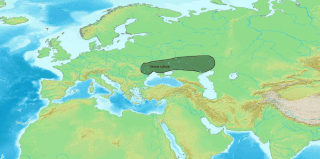 W
WThe following outline is provided as an overview of and topical guide to ancient Rome:
 W
WThe Roman deities most familiar today are those the Romans identified with Greek counterparts, integrating Greek myths, iconography, and sometimes religious practices into Roman culture, including Latin literature, Roman art, and religious life as it was experienced throughout the Empire. Many of the Romans' own gods remain obscure, known only by name and sometimes function, through inscriptions and texts that are often fragmentary. This is particularly true of those gods belonging to the archaic religion of the Romans dating back to the era of kings, the so-called "religion of Numa", which was perpetuated or revived over the centuries. Some archaic deities have Italic or Etruscan counterparts, as identified both by ancient sources and by modern scholars. Throughout the Empire, the deities of peoples in the provinces were given new theological interpretations in light of functions or attributes they shared with Roman deities.
 W
WIn ancient Roman religion, agricultural deities were thought to care for every aspect of growing, harvesting, and storing crops. Preeminent among these are such major deities as Ceres and Saturn, but a large number of the many Roman deities known by name either supported farming or were devoted solely to a specific agricultural function.
 W
WThe Roman Emperors Route is a tourism and archaeology project in Serbia, a route spanning 600 km with several ancient Roman sites, among which are notable cities, estates and birthplaces. The project's name is derived from the fact that 17 Roman emperors were born within the current borders of Serbia, the second country after Italy itself. The sites include the important Roman cities of Sirmium, Felix Romuliana and Naissus. The project is regarded as one of the largest archeological and tourism projects in Serbia, and the project board is guided and financed by the Serbian Ministry of Economy and Regional Development and Ministry of Culture. It is regarded as one of the national brands of Serbia.
 W
WThe gens was a Roman, Italic, or Etruscan family, consisting of all those individuals who shared the same nomen and claimed descent from a common ancestor. It was an important social and legal structure in early Roman history.
 W
WThere were many different types of gladiators in ancient Rome. Some of the first gladiators had been prisoners-of-war, and so some of the earliest types of gladiators were experienced fighters; Gauls, Samnites, and Thraeces (Thracians) used their native weapons and armor. Different gladiator types specialized in specific weapons and fighting techniques. Combatants were usually pitted against opponents with different, but more or less equivalent equipment, for the sake of a fair and balanced contest. Most gladiators only fought others from within the same school or Ludus, but sometimes specific gladiators could be requested to fight one from another Ludus.
 W
WThe vocabulary of ancient Roman religion was highly specialized. Its study affords important information about the religion, traditions and beliefs of the ancient Romans. This legacy is conspicuous in European cultural history in its influence on later juridical and religious vocabulary in Europe, particularly of the Western Church. This glossary provides explanations of concepts as they were expressed in Latin pertaining to religious practices and beliefs, with links to articles on major topics such as priesthoods, forms of divination, and rituals.
 W
WTribes were groupings of citizens in ancient Rome, originally based on location. Voters were eventually organized by tribes, with each Roman tribe having an equal vote in the Tribal Assembly.
 W
WVarious lists regarding the political institutions of ancient Rome are presented. Each entry in a list is a link to a separate article. Categories included are: constitutions (5), laws (5), and legislatures (7); state offices (28) and office holders ; political factions and social ranks (8). A political glossary (35) of similar construction follows.